Did you know that an estimated ten to fifteen percent of our beloved furry friends will experience seasonal allergies at some point in their lives (1)?
That’s right, just like us humans, our pets can also fall victim to the sneezes, itchy skin, and other discomforts that come hand-in-paw with seasonal allergies.
In this informative journey, we’ll not only uncover the 3 unmistakable signs of summer allergies in dogs but also equip you with 5 ways to provide them with the relief they deserve!
#1 Itchy Skin

In dogs, the most common symptom associated with allergies is none other than the notorious itchiness.
Whether it’s a localized scratch or an all-over-body itch, our furry pals just can’t catch a break from their itchy skin, which goes by the fancy name of Atopic Dermatitis.
But who are the pesky culprits causing this canine problem? Here are the three key causes of skin allergies in our four-legged friends:
Environmental Allergens

Skin allergies caused by environmental factors take the crown as the most common canine allergic reactions.
These seasonal surprises are brought to your pup by allergens like dust, pollen, weeds, grasses, and even mold.
So, if you notice your pup doing an itch-a-thon only during specific times of the year (summer), then you might want to blame it on these sneaky seasonal suspects.
Food Allergies

Just like us, some pups have a bone to pick with certain foods, causing allergic reactions and triggering their scratching frenzy.
Expect them to scratch around their ears and paws like professional food detectives.
But hold your kibble — gastrointestinal symptoms like vomit and runny poops might also be red flags indicating a food allergy.
Flea Allergy Dermatitis
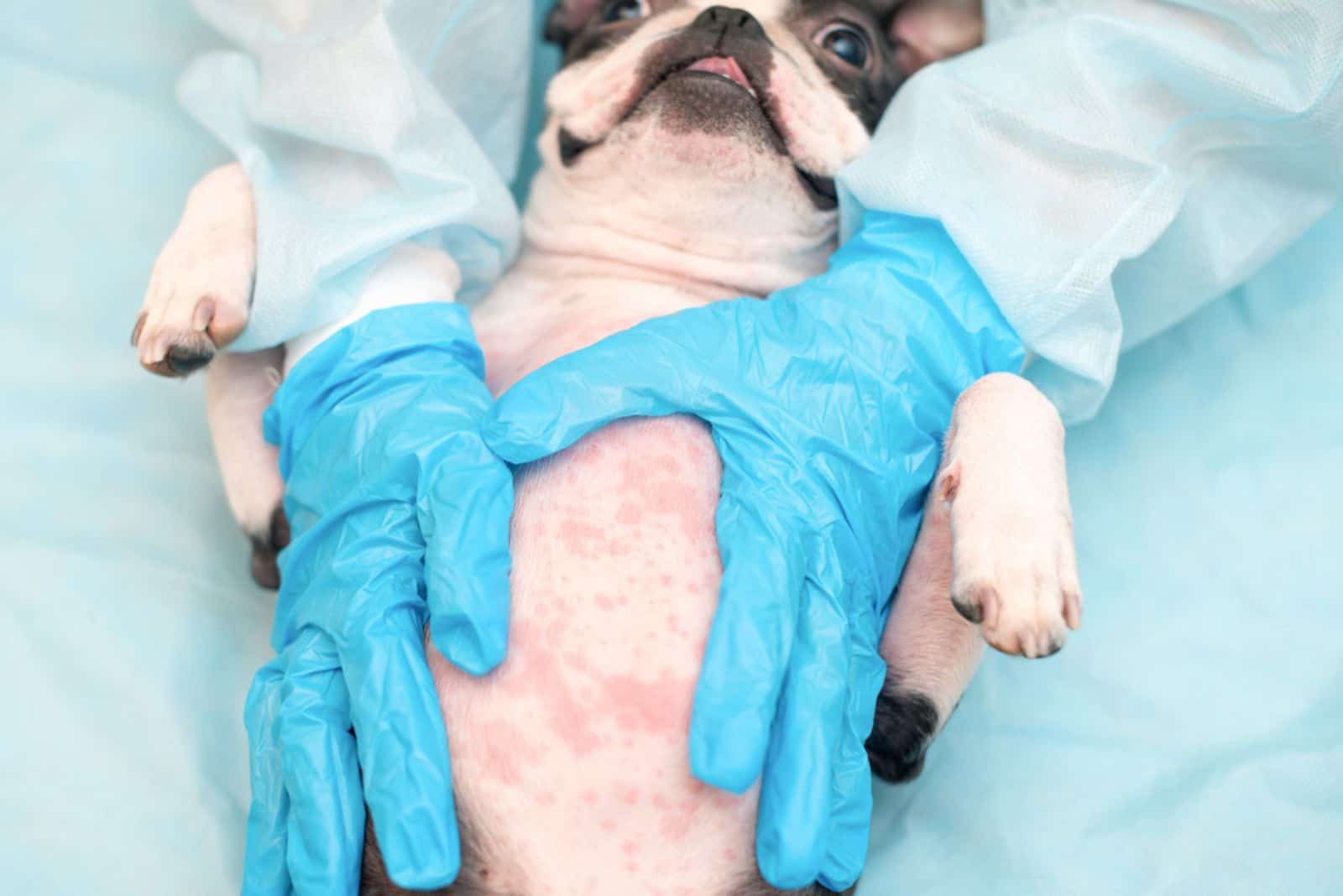
This allergic reaction is triggered by the saliva of those pesky fleas.
Dogs affected by this infuriating itchiness can’t help but scratch like crazy, especially around the tail area.
Watch out for irritated, swollen, dry, and flaky skin. Such skin can eventually develop rashes and open wounds that might get infected.
#2 Watery Eyes And Sneezing
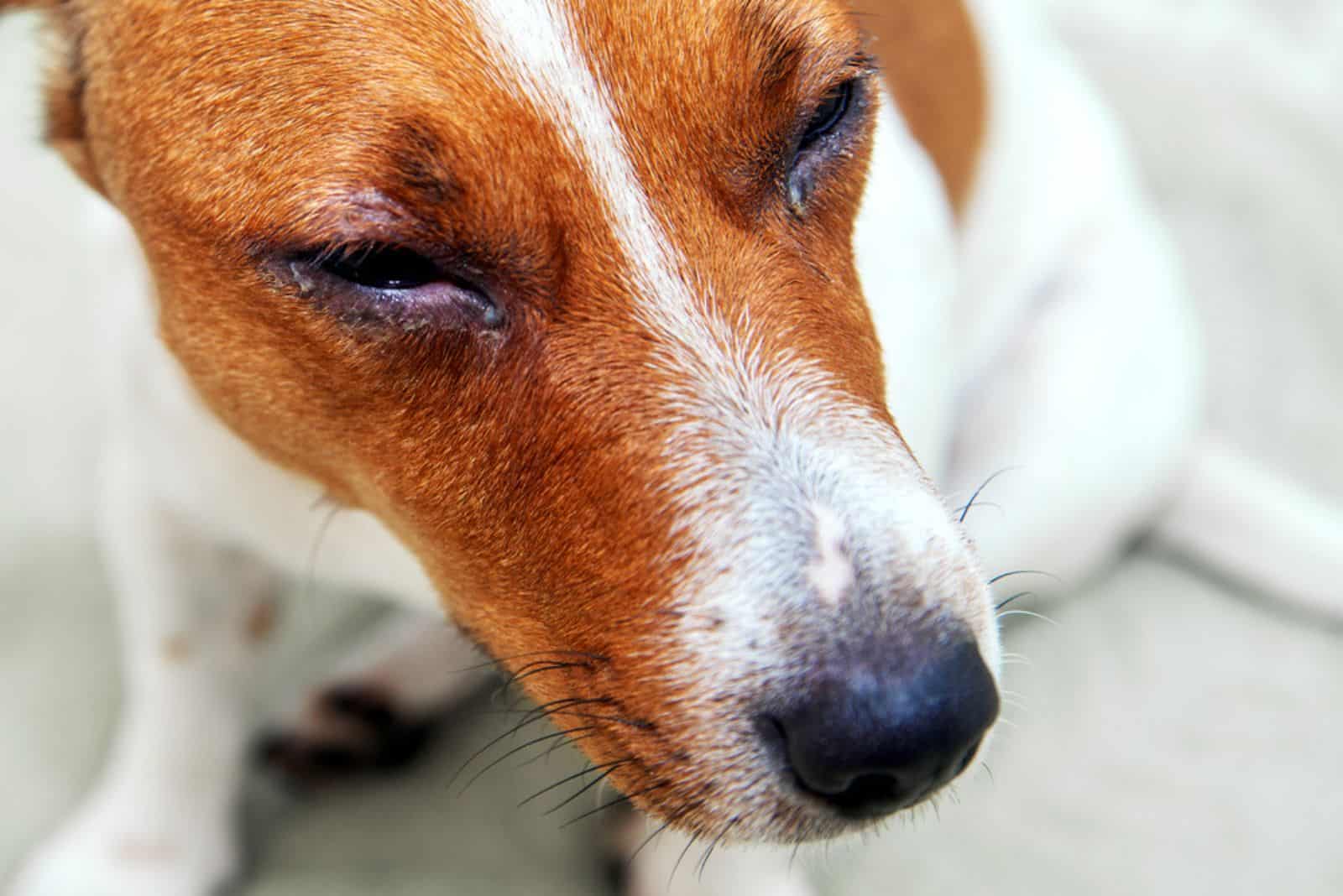
While allergies in our furry pals often take center stage with their skin or tummy troubles, we can’t overlook the possibility of those pesky allergies causing some serious eye irritation too, similar to sniffly humans during pollen season.
We’ve got a fancy medical term for you too — “allergic conjunctivitis”. Such eye inflammation can be caused by environmental allergens like pollen and mold.
When it comes to allergic conjunctivitis, both eyes are often in the same boat — red and irritated (2). Other signs include squinting of the affected eye(s) or pawing at their adorable faces.
So, you spot your pup shedding tears like he is starring in a canine soap opera, it could be a sign of these allergies.
Sometimes, that eye discharge even takes on a mucoid, pus-like appearance with vibrant hues of green or yellow.
#3 Ear Infections

Dog ear infections often tag along as the sidekick to underlying seasonal allergies (3).
First up, we have the classic headshake — a pup’s way of saying, “Hey, something’s not right in my ears!”
Observe the obvious discomfort when you try to investigate those ear canals. Your dog probably won’t be too happy with you touching his inflamed ears.
Additionally, a distinctive odor might waft from his ears, hinting at the ear infection’s secret hideout.
Keep an eye out for some other telltale signs of this eary situation:
- Fluid or waxy substance build-up in the ear
- Head-shaking
- Ear-rubbing and pawing
- Redness in the ear canal
- Excessuve scratching
- Self-harm due to excessive scratching
5 Ways To Help Your Dog With Seasonal Allergies
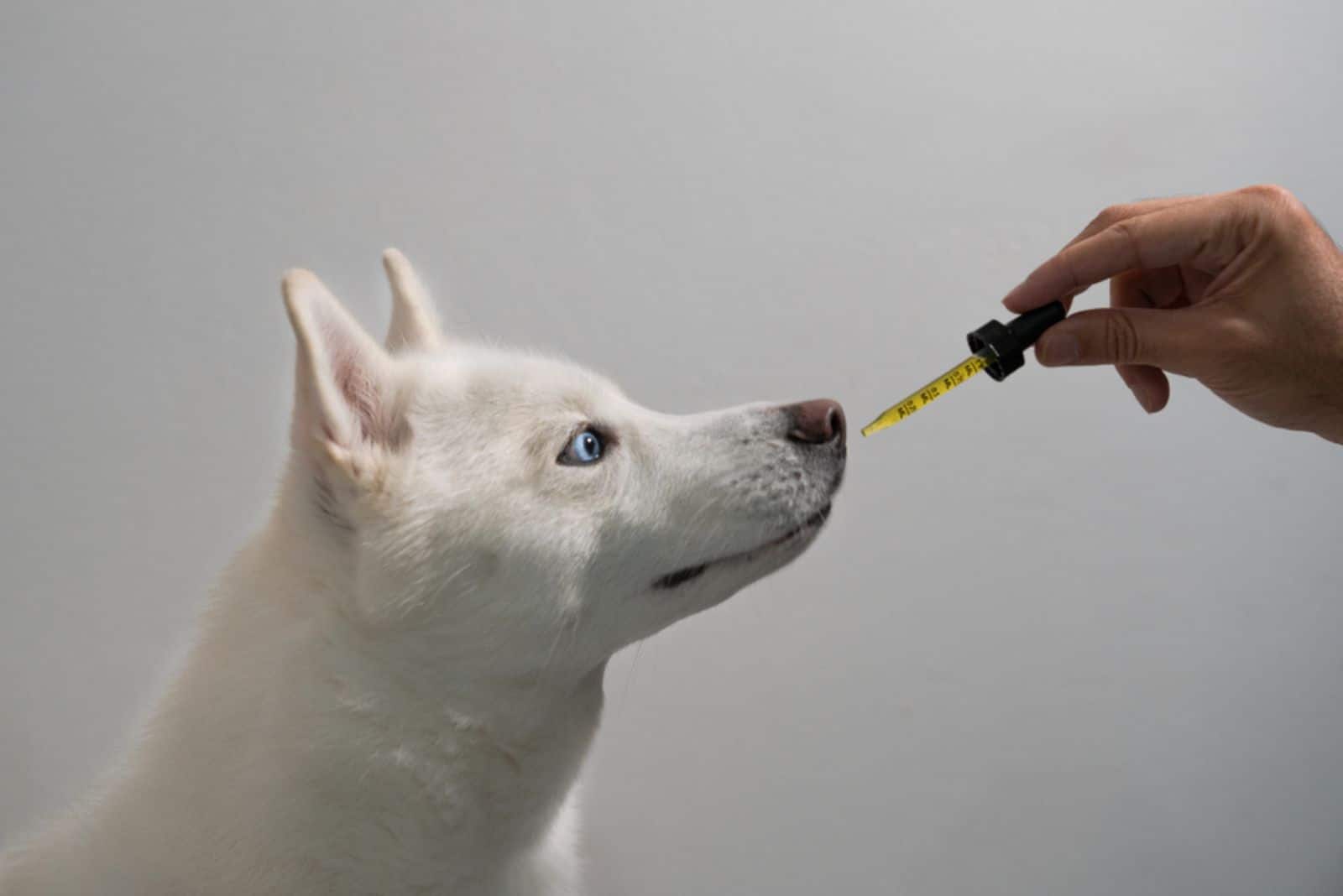
The itching, scratching, and discomfort can put a damper on their summer fun.
Let’s explore five essential ways to help your pup conquer seasonal allergies and get back to wagging his tail with joy!
#1 Use Supplements In His Diet
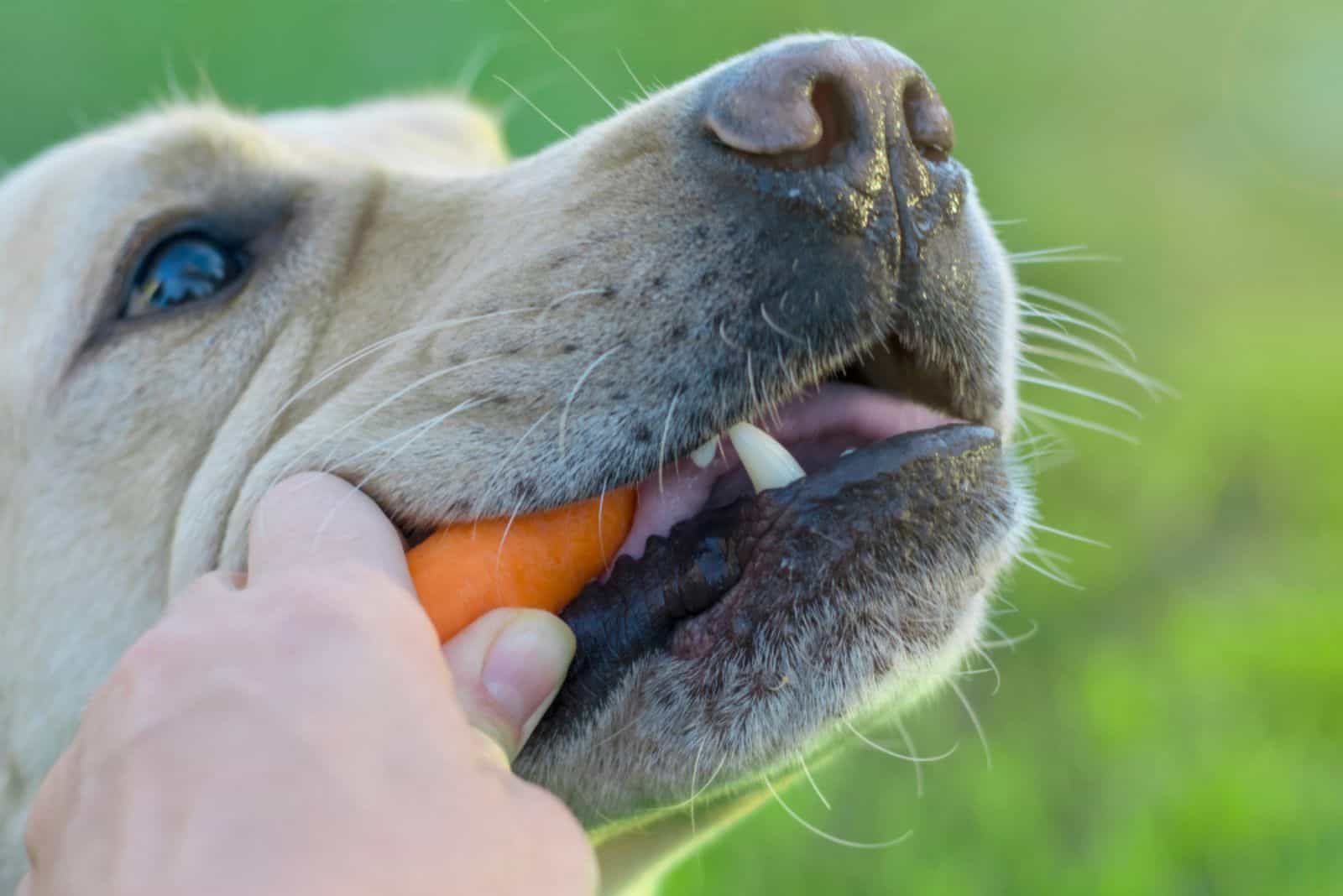
One way to help your dog with seasonal allergies is to spice up his chowtime with some supplements.
In a remarkable study, dogs suffering from Atopic Dermatitis experienced improvements when nourished with a diet rich in PUFAs (polyunsaturated fatty acids), antioxidants, and polyphenols (4).
From improved skin condition to reduced itchiness, this special diet works wonders by rescuing your pup from the clutches of allergy discomfort.
#2 Clear The Are And Everything else

Did you know that maintaining a clean and allergen-free environment can work wonders in reducing seasonal allergy problems in dogs?
By clearing the air of these pesky particles, we create a sanctuary where dogs can breathe easy and sniff away without those irritating sneezes and itchiness.
And, don’t forget about the bedding. Dust mites, a common trigger for allergies in dogs, can find their way into bedding and trigger those dreaded symptoms.
By regularly washing and maintaining clean bedding, we create a haven where our pups can rest peacefully, free from the clutches of allergens.
#3 Choose The Right Time To Go On A Walk
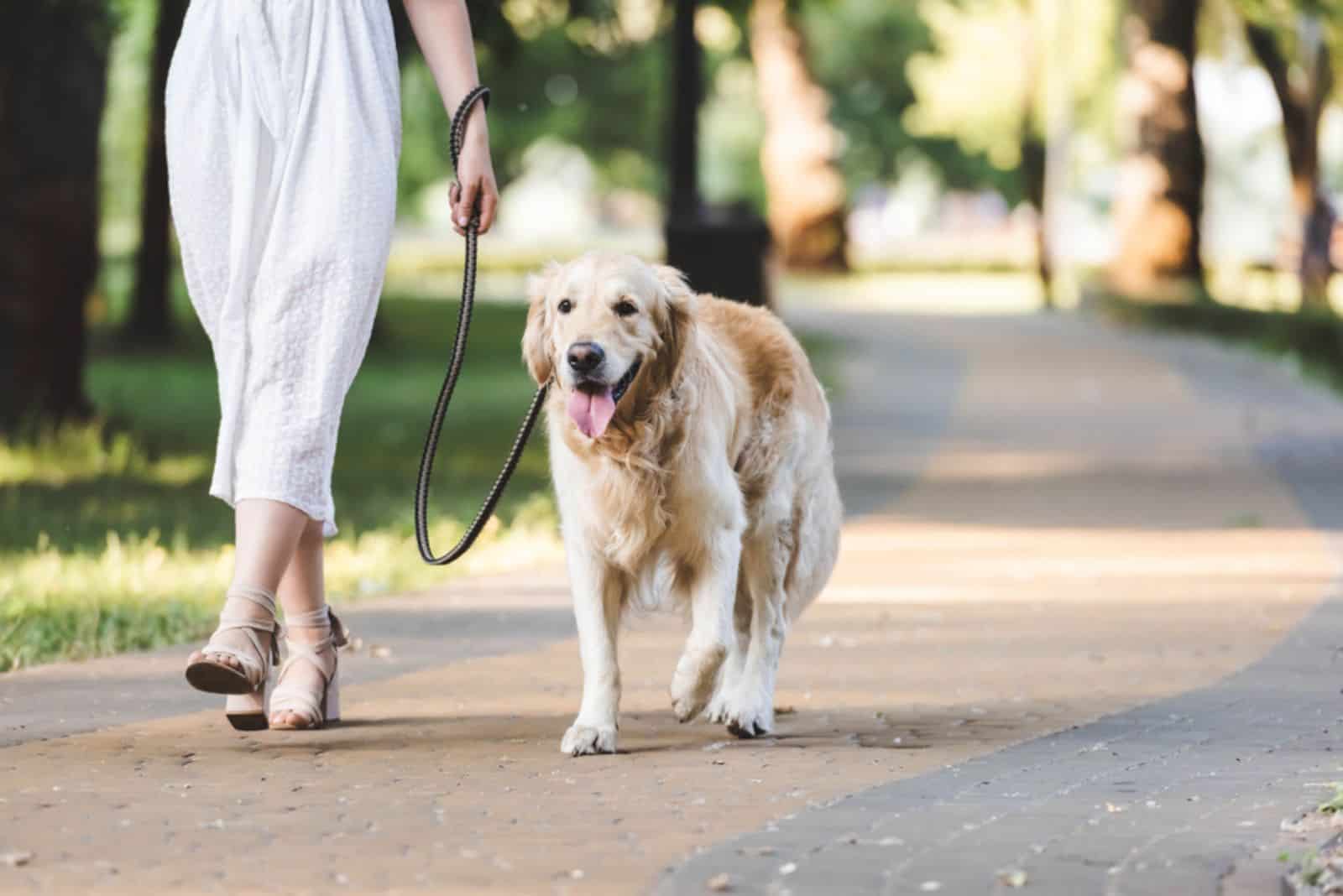
When it comes to seasonal allergies, timing is everything.
By strategically choosing the right time to embark on your outdoor excursions, you can minimize your pup’s exposure to allergens and maximize his enjoyment.
Opting for early morning or late evening walks can be a game-changer.
During these times, allergens like pollen and dust tend to be at their lowest levels, allowing your pup to roam freely without the constant threat of sneezes and itchy noses.
#4 Bathe Your Dog
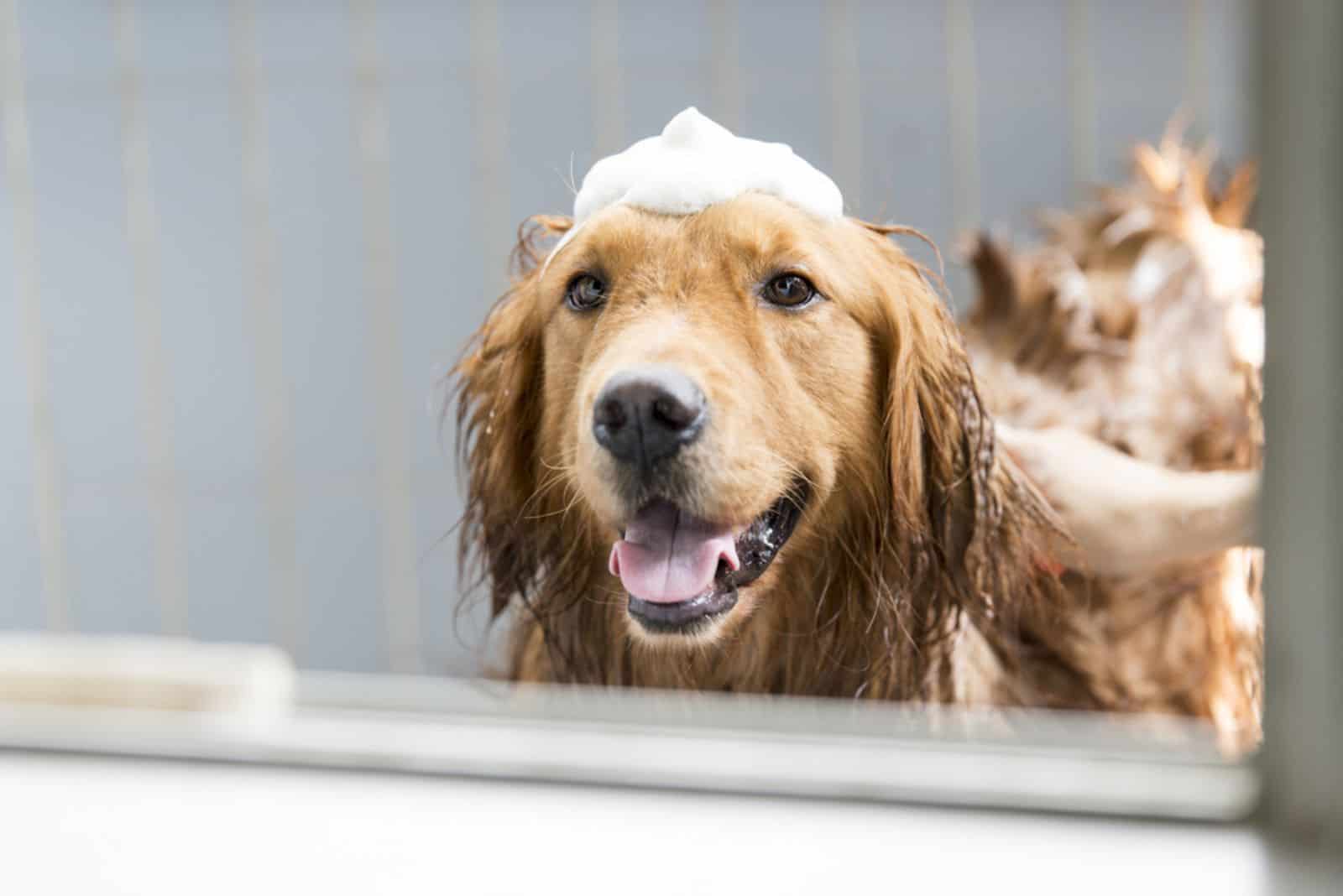
Bathing your dog plays a vital role in removing allergens from his fur and skin.
Similar to humans, dogs can accumulate allergens like pollen, dust, and other irritants in their coat, leading to itchiness and discomfort.
Therefore, a good bath using dermatologic shampoos can be a game-changer, helping to wash away those pesky particles and provide relief to your furry friend.
Generally, bathing your dog every four to six weeks is a good rule of thumb.
However, during allergy season, you may need to increase the frequency to once every two to three weeks to keep those allergens at bay.
#5 Consult A Vet
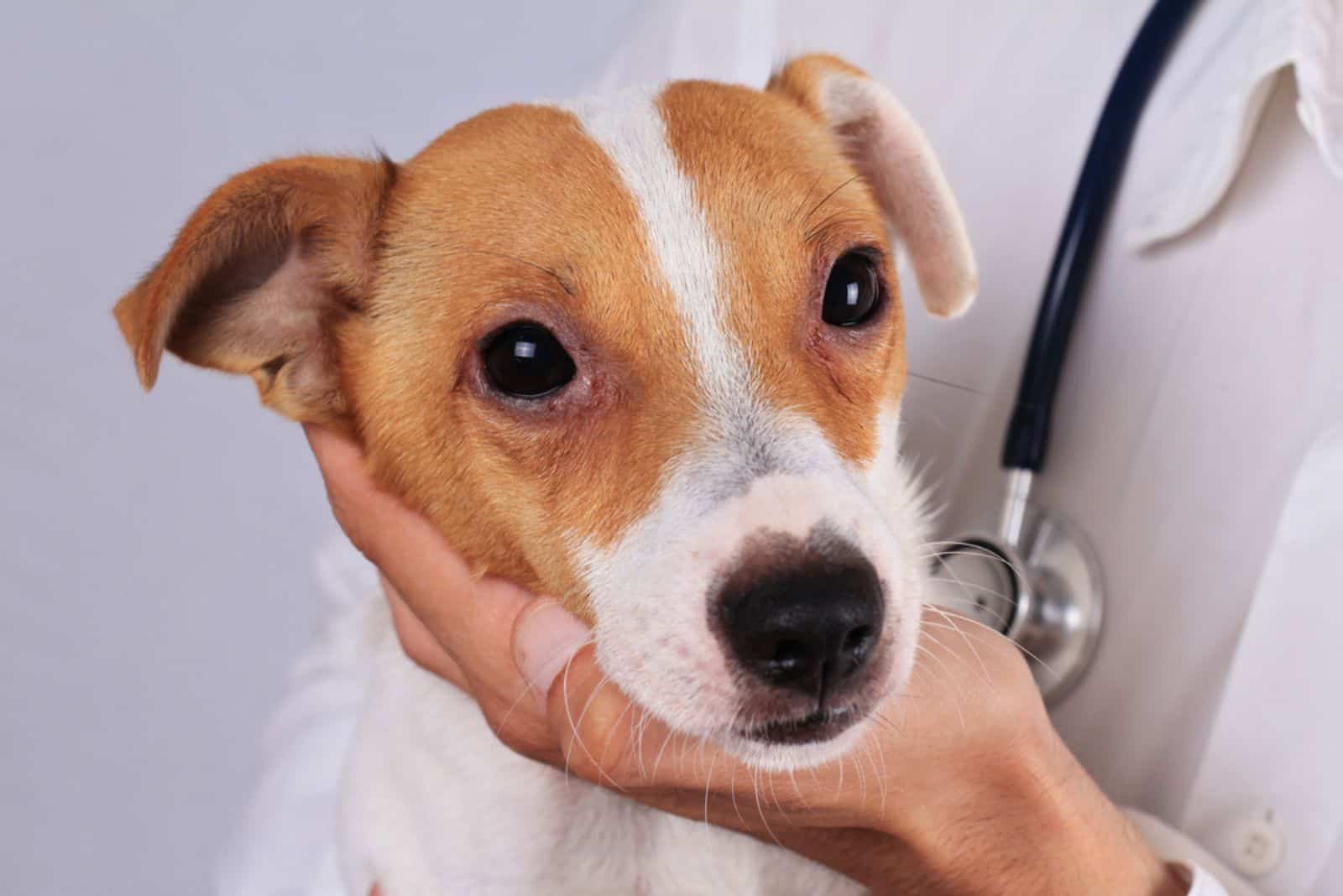
Lastly, consulting a veterinarian is the best idea.
These knowledgeable professionals possess a wealth of expertise in identifying and managing allergies in dogs. They can help recommend appropriate treatments, and guide you on your journey to a happier, itch-free pup.
One key tool in the vet’s arsenal is allergy testing.
By conducting specialized tests, such as skin or blood tests, your vet can pinpoint the specific allergens triggering your dog’s allergic reactions.
This information will allow for targeted treatment plans tailored to your pup’s individual needs.
Final Thoughts
With the support of PupVine and your trusted veterinarian, you’re now equipped to conquer those pesky seasonal allergies like a true hero – you can now easily recognize those signs of summer allergies in dogs and find out ways to help!
Together, we’ll make sure your furry companion can enjoy the summer without sneezes and itchiness.
References:
1. Chan SK, Leung DYM. Dog and Cat Allergies: Current State of Diagnostic Approaches and Challenges. Allergy Asthma Immunol Res. 2018 Mar;10(2):97-105. doi: 10.4168/aair.2018.10.2.97. PMID: 29411550; PMCID: PMC5809771.
2. Lourenço-Martins AM, Delgado E, Neto I, Peleteiro MC, Morais-Almeida M, Correia JH. Allergic conjunctivitis and conjunctival provocation tests in atopic dogs. Vet Ophthalmol. 2011 Jul;14(4):248-56. doi: 10.1111/j.1463-5224.2011.00874.x. Epub 2011 Apr 18. PMID: 21733066.
3. Saridomichelakis, M, et al., (2007). Aetiology of canine otitis externa: a retrospective study of 100 cases. Veterinary Dermatology, 18(5), pp.341-347.
4. Witzel-Rollins A, Murphy M, Becvarova I, Werre SR, Cadiergues MC, Meyer H. Non-controlled, open-label clinical trial to assess the effectiveness of a dietetic food on pruritus and dermatologic scoring in atopic dogs. BMC Vet Res. 2019 Jun 28;15(1):220. doi: 10.1186/s12917-019-1929-2. PMID: 31253166; PMCID: PMC6599232.
